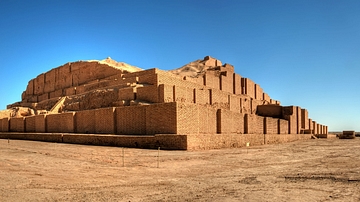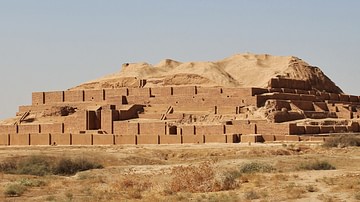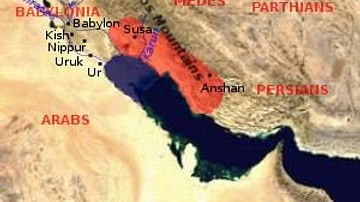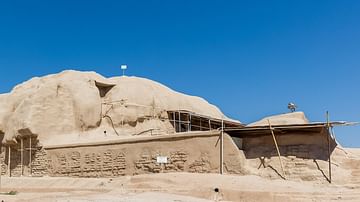Illustration
Chogha Zanbil is a magnificent, 3300-year-old ancient Elamite complex located 30 kilometres (18 miles) south-east of the ancient city of Susa in the Khuzestan province of western Iran. The principal element of this complex is an enormous brick ziggurat, a large stepped pyramidal temple dedicated to the Elamite divinity Inshushinak, the protector and patron god of Susa. Chogha Zanbil was founded around 1250 BCE by the Elamite king Untash-Napirisha as the religious centre of Elam. Its original Elamite name was Dur Untash, a combination of Elamite Dur, meaning place/resident/city, and Untash the Elamite king who built it. The Chogha Zanbil ziggurat is considered to be the best-preserved of its kind and the finest surviving testimony to the once-great Elamite civilization.
About the Author
Cite This Work
APA Style
Raddato, C. (2019, May 17). Chogha Zanbil Ziggurat, Iran. World History Encyclopedia. Retrieved from https://www.worldhistory.org/image/10669/chogha-zanbil-ziggurat-iran/
Chicago Style
Raddato, Carole. "Chogha Zanbil Ziggurat, Iran." World History Encyclopedia. Last modified May 17, 2019. https://www.worldhistory.org/image/10669/chogha-zanbil-ziggurat-iran/.
MLA Style
Raddato, Carole. "Chogha Zanbil Ziggurat, Iran." World History Encyclopedia. World History Encyclopedia, 17 May 2019. Web. 13 Apr 2025.



![Chogha Zanbil Ziggurat [East Side], Iran](https://www.worldhistory.org/img/c/p/360x202/10670.jpg?v=1702536009)




